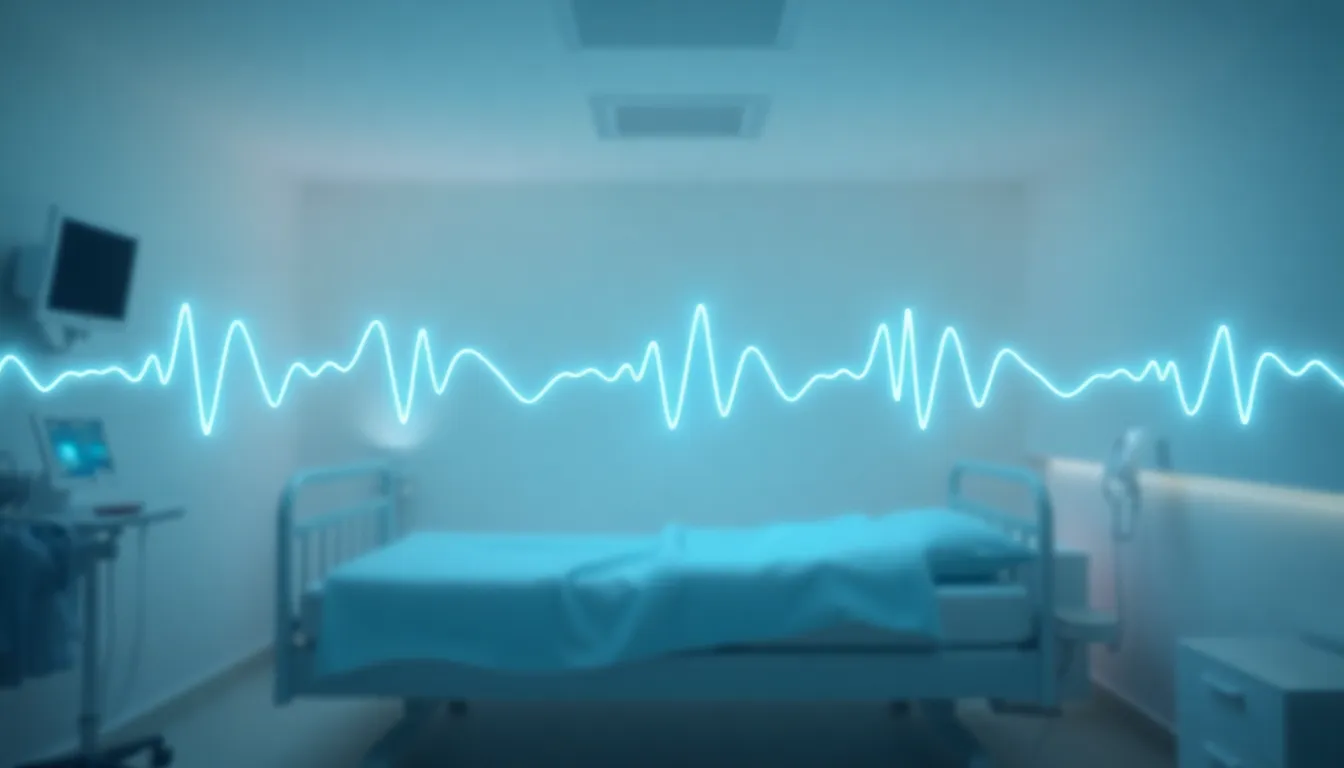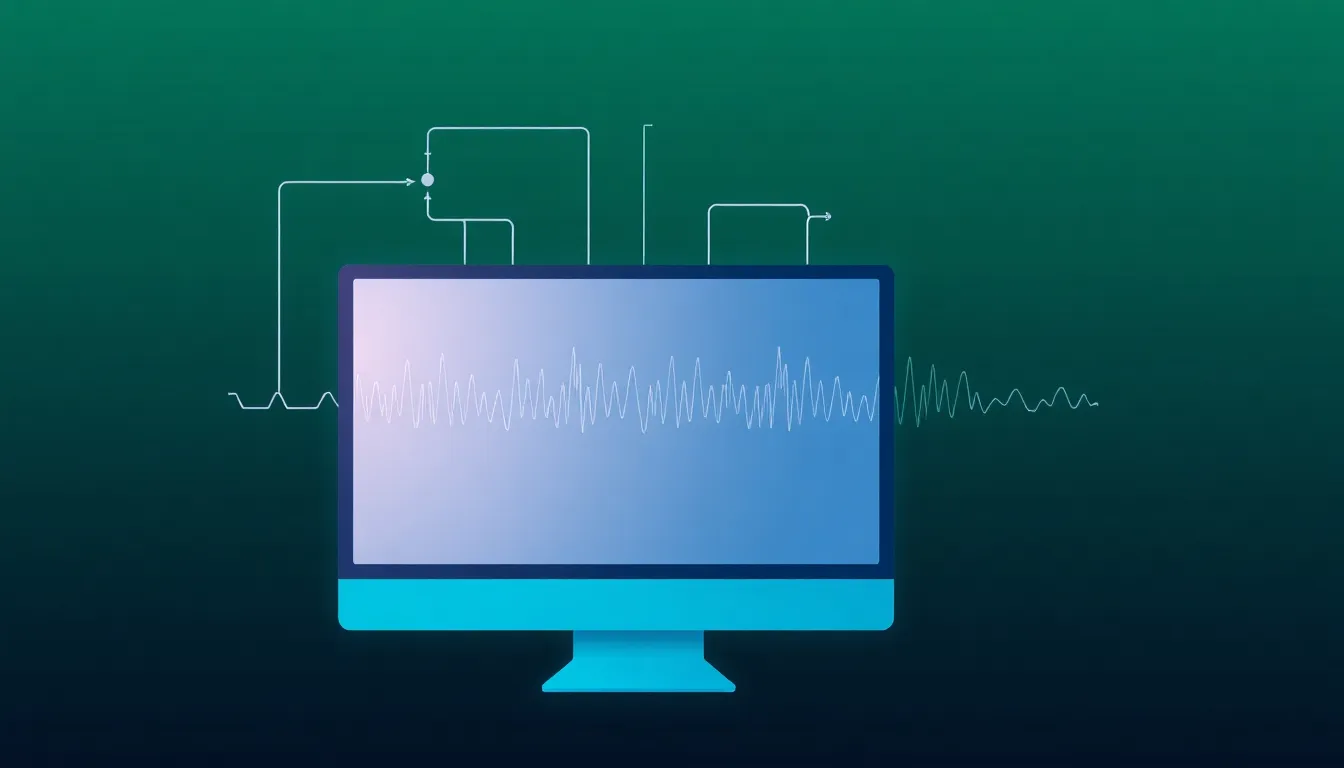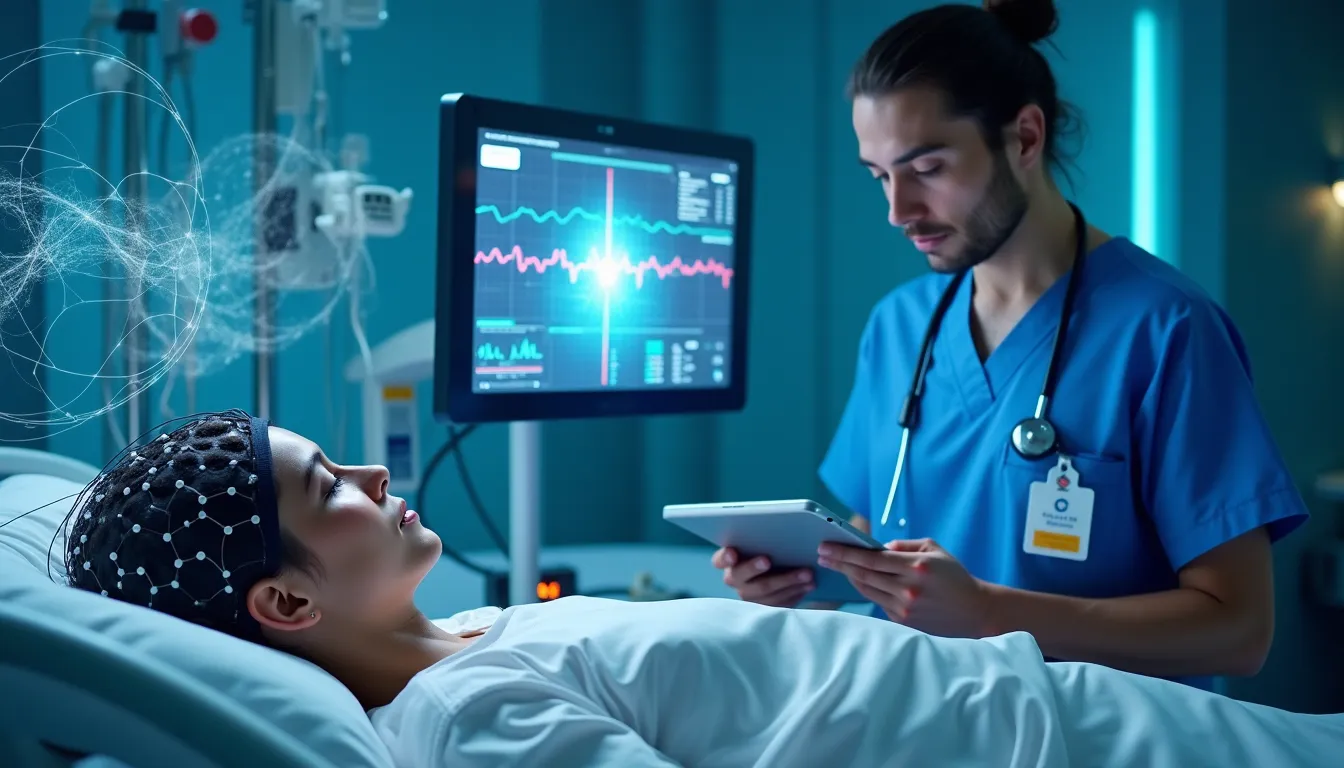Hook
In the ICU, every brain wave matters. A new class of models trained on continuous EEG streams promises real time insight into brain health, turning noisy signals into actionable alerts while patients fight for recovery.
Insight
The Brain foundation model for ICU brain monitoring represents a shift from periodic reviews to ongoing interpretation of neural activity. Built around large scale EEG data, it aims to identify subtle changes the human eye might miss as care teams focus on multiple critical tasks.
Evidence
The project is led by the Cleveland Clinic in partnership with Piramidal, a San Francisco startup founded in 2023 and backed by Y Combinator with six million in seed funding. The system reads EEG data collected via scalp electrodes and is designed to flag abnormalities in seconds, contrasting with today’s typical EEG reports reviewed every 12 to 24 hours that can take two to four hours to complete. Developers say the model trained on nearly a million hours of EEG from dozens of thousands of patients and uses both publicly available and proprietary datasets. In the coming six to eight months, testing will occur in tightly controlled ICU environments with live patient data and a limited number of beds and doctors, with plans to roll out gradually to the entire ICU and then to hundreds of patients.
Payoff
If successful, this approach could shorten the time to detect seizures or other critical shifts in consciousness, inform timely interventions, and improve outcomes while maintaining stringent safeguards as the technology scales.
Conclusion
Beyond the ICU, researchers at Synchron are pursuing their own brain foundation model, and the broader field calls for anticipatory ethical guardrails informed by ethicists, social scientists, legal scholars, and patients to ensure responsible innovation. The article will explore how real time flagging, data privacy, and continuous EEG monitoring intersect with patient safety and trust.
Source: 689b3b076a1e351ff4583731

Insight
What is a brain foundation model for ICU brain monitoring? It is a large scale AI system trained on vast streams of brain activity data, especially EEG signals, to learn patterns that generalize across patients and ICU contexts. Built to interpret continuous neural activity, it turns noisy signals into reliable, actionable insights in real time. Rather than waiting for periodic reviews, clinicians receive ongoing interpretation that helps distinguish delicate shifts in brain health from the noise of critical care, guiding timely decisions.
In practice this means linking EEG data sources to real time monitoring pipelines. Electrodes on the scalp feed a ceaseless flow of information into a model that can flag seizures, altered consciousness, or subtle deteriorations within seconds. This approach hinges on continuous EEG monitoring rather than once daily or every few hours, enabling care teams to respond with precision while multitasking in a high stakes environment.
Why it matters: ICU brain health is a dynamic and fragile domain. A brain foundation model offers the potential to shorten time to insight, reduce missed events, and illuminate the trajectory of recovery for each patient. It also frames care around what the brain is telling us at every moment rather than what a snapshot captured hours earlier could convey.
This type of thing is time-consuming. It is subjective, and it is experience- and expertise-dependent.
The beauty of a foundation model is the same way ChatGPT can generalize text, it can adapt to your tone, it can adapt to your way of writing—our model is able to adapt to the brains of different people.
The players and their roles are clear. The Cleveland Clinic is partnering with Piramidal, a San Francisco startup founded in 2023 and backed by Y Combinator to build the core model that reads EEG data and signals clinical status in seconds. Synchron is pursuing its own brain foundation model using trial participant data. Dana Foundation and other funders help shape the ethical frame and support responsible research. Across these efforts the goal is to move from tightly controlled ICU testing toward broad real time deployment and to extend insights beyond critical care into epilepsy and sleep monitoring.
The evidence journey begins here with plans for live ICU testing, rigorous safety safeguards, and transparent governance so that families, clinicians, and patients can trust the technology as it evolves toward real world impact.
Caption: Vendor and data source comparison for brain foundation models in ICU brain monitoring, highlighting Piramidal, Cleveland Clinic partnership, and Synchron as key players in the brain foundation model for ICU brain monitoring
| Organization | Primary Data Source | Real time Processing | Notable Benefit | Primary Risk Ethical Consideration | Status Timeline |
|---|---|---|---|---|---|
| Piramidal (with Cleveland Clinic partnership) | Large scale EEG data including proprietary datasets from Cleveland Clinic and other partnerships | Yes | Real time flagging of abnormalities within seconds | Data privacy, consent, false positives, and need for guardrails | Testing in tightly controlled ICU with live data in 6-8 months; gradual rollout to entire ICU and beyond |
| Cleveland Clinic | EEG data used to train model from clinical practice and partnerships | Yes | Access to high quality clinical EEG datasets | Privacy and data sharing concerns | Ongoing collaboration with Piramidal; next testing phase in coming months |
| Synchron | Brain foundation model data from trial participants | Yes | Scalable real time monitoring across contexts | Data privacy governance and equitable access | Ongoing development with trials; aims to broaden deployment after validation |
Data scale and datasets
Piramidal notes that the system has been trained on nearly a million hours of EEG monitoring data drawn from dozens of thousands of patients. The training pool combines publicly available EEG datasets with proprietary data gathered through the Cleveland Clinic and partner institutions. By blending retrospective data with live clinical inputs from collaborations, the model aims to generalize across ICU contexts and individual brain patterns.
Operational realities
Today EEG reports are typically generated every twelve to twenty four hours and reviewing a day’s worth of data can take two to four hours. The new system decouples this workflow by providing real time flagging in seconds, so care teams can respond to evolving brain signals while continuing routine monitoring and care tasks.
Testing plans and rollout goals
The team plans six to eight months of tightly controlled ICU testing with live patient data and a limited number of beds and doctors to scrutinize safety and performance. If results are favorable, rollout targets the entire ICU and then scaling to hundreds of monitored patients with phased deployment to manage false positives and drift.
Performance notes
Piramidal has evaluated its technology against a network of doctors and has achieved ‘humanlike’ performance. As with any powerful tool, caveats include ongoing concerns about false positives and false negatives. In the team’s words: ‘This type of thing is time-consuming. It is subjective, and it is experience- and expertise-dependent.’ Another framing from leadership emphasizes adaptability: ‘The beauty of a foundation model is the same way ChatGPT can generalize text, it can adapt to your tone, it can adapt to your way of writing; our model is able to adapt to the brains of different people.’ Advancements like this one highlight the need for anticipatory ethical frameworks that support responsible development and use of these technologies. Data privacy and governance remain ongoing priorities, with input from ethicists, social scientists, legal scholars, patients, and clinicians.
Named entities
Cleveland Clinic, Piramidal, Synchron, Y Combinator, Dana Foundation.

Payoff and clinical impact
- Faster detection of adverse events: Real time flagging of seizures, ischemic changes, and delirium trajectories within seconds, enabling timely interventions and potentially shortening ICU stays. This can shift practice from reactive to proactive management, especially in high risk patients where EEG shows subtle patterns.
- Improved triage and care prioritization: Continuous EEG streams inform which patients require urgent bedside assessment or imaging, improving bed management and resource allocation while maintaining patient safety.
- Reduced clinician cognitive load and alert fatigue: By aggregating complex brain data into concise, interpretable alerts, clinicians can focus on therapy and daily tasks rather than manually scanning hours of EEG traces.
- Lower false positive and false negative rates through continuous monitoring: Unlike periodic reviews, continuous data reduces sampling error and supports better calibration, with guardrails to prevent desensitization to alerts.
- Real world adoption and partnerships: The payoff is anchored in real deployments led by the Cleveland Clinic and Piramidal, with Synchron pursuing parallel efforts and strong backing from Y Combinator; the Dana Foundation funds ethical framing to ensure responsible use. This ecosystem demonstrates feasibility and accelerates adoption across ICUs as data privacy and governance frameworks evolve.
- Broader patient outcomes and scope: Beyond the ICU, potential applications include epilepsy and sleep monitoring, expanding the impact of the brain foundation model across neurology and critical care.
- “The model plays that role of constantly monitoring patients in the ICU and letting the doctors know what’s happening with the patient and how their brain health is evolving in real time.”
- Ethical and governance guardrails: As adoption grows, anticipatory ethical frameworks and multidisciplinary oversight will be essential to balance innovation with patient rights and clinician trust.
- Concluding thought: With careful rollout and shared standards, real time brain monitoring could redefine ICU care by linking bedside decisions to continuous neural signals, ultimately translating faster insight into safer, more effective patient journeys.
Ethics & Governance Box: Anticipatory frameworks and stakeholder input
- Anticipatory frameworks guide responsible innovation before deployment in ICU care by outlining potential benefits, harms, and mitigations. They encourage scenario planning that anticipates shifts in patient autonomy, privacy, clinician workflows, and trust, ensuring safeguards travel with the technology from the outset.
- Privacy and consent: Brain data and EEG signals are highly personal. Institutions should implement clear consent processes for data usage, options to withdraw, and robust deidentification, access controls, and differential privacy practices to balance learning with protection.
- Data governance: Define data ownership, stewardship, retention, and cross border access policies. Establish accountable governance bodies with transparent decision making, audit trails, and robust data provenance to prevent misuse or opaque sharing.
- Bias mitigation: Proactively evaluate training data diversity and model performance across age, sex, ethnicity, and clinical condition. Apply fairness checks, adjust pipelines, and involve diverse stakeholders to minimize disproportionate risks.
- Transparency: Clearly communicate the model capabilities, limitations, and expected behavior to clinicians and patients. Provide explainable outputs when possible and maintain clear documentation that emphasizes uncertainty and boundaries.
- Human oversight: Clinicians should retain ultimate responsibility for patient care. Build explicit guardrails for overrides, escalation pathways, and ongoing human review of model recommendations in critical moments.
- Multidisciplinary involvement: Involve ethicists, social scientists, legal scholars, and patients in governance design. Co design with patients to ground decisions in lived experiences and social context.
- Ongoing evaluation: Treat deployment as a continual learning process with post deployment audits, performance tracking across contexts, and policy updates that reflect new evidence and evolving societal values.
- Patients lived experiences: Listening to patients’ lived experiences illuminates preferences, values, and mistrust that data alone cannot capture, strengthening legitimacy and trust in governance processes.
- Quotation: “Advancements like this one highlight the need for anticipatory ethical frameworks that support responsible development and use of these technologies,” and this underlines the importance of listening to patient voices in shaping safeguards.

Conclusion and Future Directions
This article has traced how the brain foundation model for ICU brain monitoring moves from intermittent reviews to continuous listening to the brain in crisis. The hook’s energy becomes practical through the evidence that real time flagging can alert teams within seconds and that nearly a million hours of EEG data support broader generalization. The payoff is meaningful yet bounded by risk. A cautious optimism should guide every step as the field matures.
In the near term clinicians will see tools that augment rather than replace expertise. In tightly controlled tests these systems can identify seizures, altered consciousness, and evolving brain patterns while doctors retain ultimate responsibility for care decisions. Broader deployment will require rigorous validation across diverse patient groups, careful management of false positives and drift, and robust protections for patient safety and trust. Ethical guardrails must accompany data use and governance, with clear communication about limitations and ongoing oversight.
Looking forward the model should integrate additional data streams and contexts such as epilepsy and sleep related patterns, while preserving accuracy across sites. Researchers should pursue equity in data inclusion, transparent reporting of performance, and methods to detect bias. Governance structures must include patient voices, ethicists, social scientists, and clinicians in joint decision making. Privacy preserving techniques, clear data ownership rules, and principled access controls should accompany scaling to new hospitals and regions.
The central message is that real time brain monitoring in the ICU can reshape care when framed by strong science and strong ethics. The community of researchers, clinicians, and policymakers bears responsibility to protect privacy, build trusted governance, and center patient welfare in every step. A collaborative and transparent path can translate promising signals into safer journeys for patients and families. Readers including researchers, clinicians, and policymakers are urged to engage with data privacy governance and patient centered care in every project and policy discussion.
Brain foundation model for ICU brain monitoring: Real time EEG insights in critical care
Meta Description
Explore how the Brain foundation model for ICU brain monitoring uses continuous EEG data to provide real time insights in the ICU. Learn about data sources, ethical guardrails, and the roles of key players such as Cleveland Clinic, Piramidal, Synchron, Y Combinator, and the Dana Foundation. This recap ties together the technology with patient safety and governance as the model moves from controlled tests to broader deployment.
Alt text proposals for images using the main keywords
- Brain foundation model for ICU brain monitoring visualization
- Real time EEG monitoring in ICU context
- ICU brain health monitoring concept using EEG data
- Real time brain monitoring in critical care
Major named entities and roles
- Cleveland Clinic — partner with Piramidal to build the core model using EEG data
- Piramidal — San Francisco startup building the brain foundation model; backed by Y Combinator
- Synchron — developing its own brain foundation model using trial participant data
- Y Combinator — seed funder backing Piramidal
- Dana Foundation — funder shaping ethical framing and governance for responsible use
Internal and external link suggestions
Internal links
- Related Emp0 overview of the brain foundation model in ICU brain monitoring
- Deep dive on EEG monitoring workflows in critical care
External links
Pull quote snippet idea
Real time brain monitoring in the ICU can shorten the time to insight while preserving patient safety and care quality.
Word count
Approximate: 335
Update mode
append

